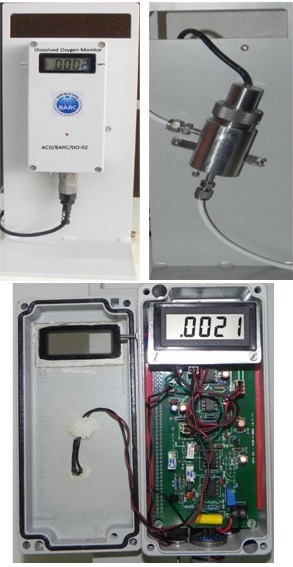

Determination of dissolved oxygen (DO) is important in various industries. In nuclear power plants the specification of DO concentration in coolant circuit is less than 7 ppb. It is also important to monitor DO in industrial waste, sewage and water bodies. BARC has developed DO monitor which has wide linear dynamic range, suitable for the determination of DO at ppb concentration range for various industrial applications.
Determination of dissolved oxygen (DO) is important in various industries. In nuclear power plants the specification of DO concentration in coolant circuit is less than 7 ppb. It is also important to monitor DO in industrial waste, sewage and water bodies. BARC has developed DO monitor which has wide linear dynamic range, suitable for the determination of DO at ppb concentration range for various industrial applications.
BARC has developed DO monitor which has wide linear dynamic range, suitable for the determination of DO at ppb concentration range for various industrial applications
INTRODUCTION
Determination of dissolved oxygen is important in various industries. It requires continuous monitoring to keep the corrosion of the structural material under control and thus to improve the life of the chemical plants. In nuclear power plants the specification of DO concentration in coolant circuit is less than 7 ppb. Determination of the dissolved oxygen is also important in industrial waste, sewage and water bodies. Determination of dissolved oxygen in potable water is an important water quality parameter. Present model has been designed for the continuous monitoring of dissolved oxygen under flow condition
The working principle is based on the redox coupling of two metals with difference in redox properties. The reduction current of oxygen is the measurable parameter for the determination of dissolved oxygen. The current flow due to this process is measured using the electronics device and the measured current is calibrated with respect to the dissolved oxygen concentration. Sensor displays the reading of dissolved oxygen concentration in ppm/ppb units
RAW MATERIALS
EQUIPMENTS
SPACE
POWER
MANPOWER
